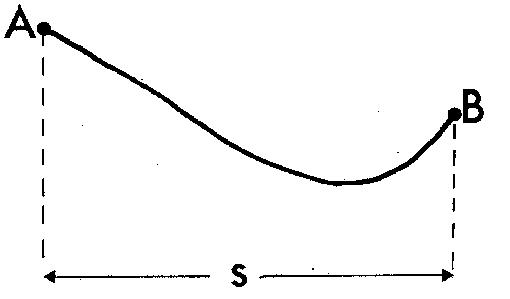Work done by friction = Nk*S=mgkS
Work done by the gravity =mgh
mgh = mgkS
h = kS
Am i rite?
A skier starts from rest at point A and slides down the hill, without turning or braking. The friction coefficient is k. When he stops at point B, his horizontal displacement is s. What is the height difference h between points A and B. (The velocity of the skier is small so that the additional pressure on the snow due to the curvature can be neglected. Neglect also the friction of air and the dependence of k on the velocity of the skier.) (1.5 points).

Note: The question is a past "competition problem" .. I will tell the source after the solution.. It is not a very difficult one...
Work done by friction = Nk*S=mgkS
Work done by the gravity =mgh
mgh = mgkS
h = kS
Am i rite?
just consider a small path...ie short horizontal distance...
just consider a incline........
and short displacement ds and length dl
(this kind of a question once came in iit too)
then work done by friction =k mg ds/dl * dl
as cos @=ds/dl
so integrating k mg ds from 0 to s we get kmgs
so this must equal the decrease in
potential energy....
hence
mgh=kmgs
ie
h=ks
btw this was an IPhO problem.. :D
1.5 marks.. i din remove that intentionally...
just one technical mistake in arshad's answer
dw=F.dl
dw=-(F)(dl)
dw=-(mg ds/dl)dl=-kmg ds
=>Wf=-kmgS
and ΔU=-mgh
Wf=ΔU
-kmgS=-mgh
=>h=kS
answer comes rite bothways..but sinec it is olympaid question..this technical thing is what mattesr..